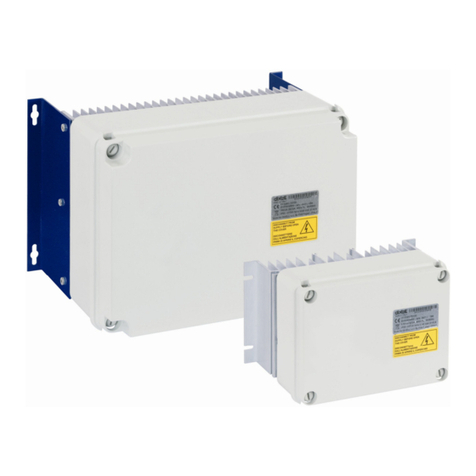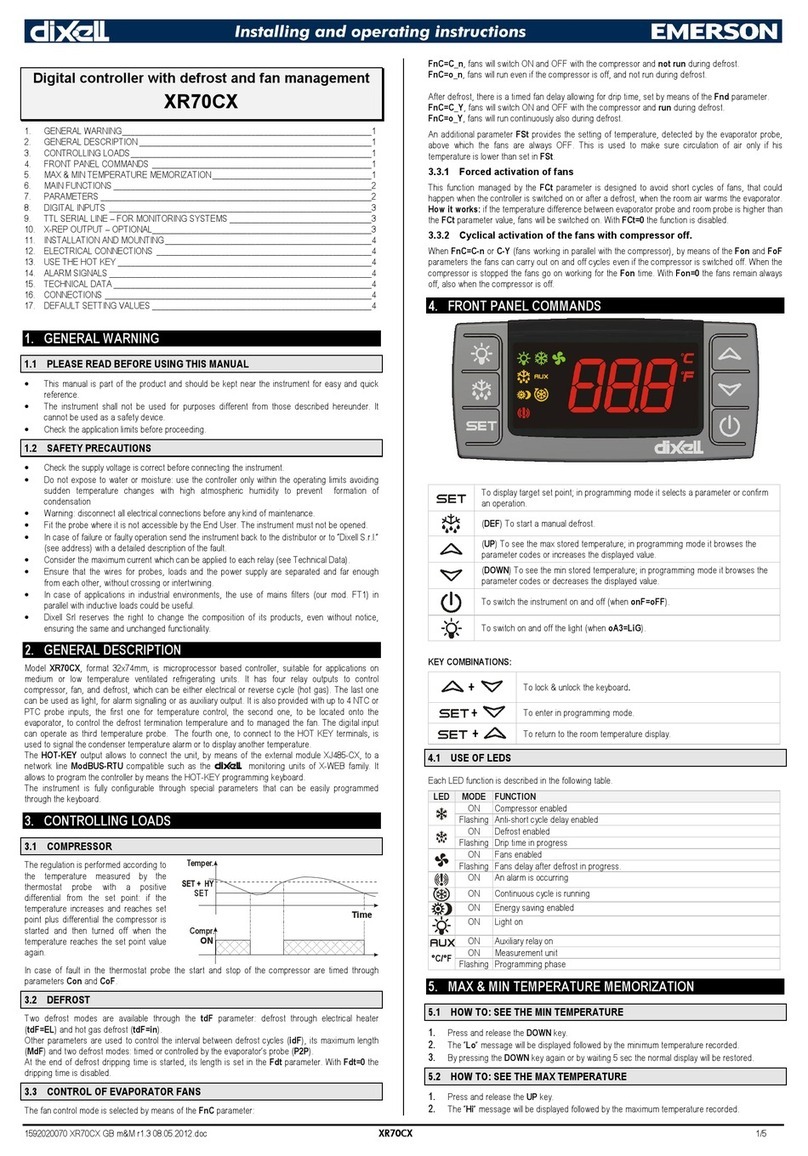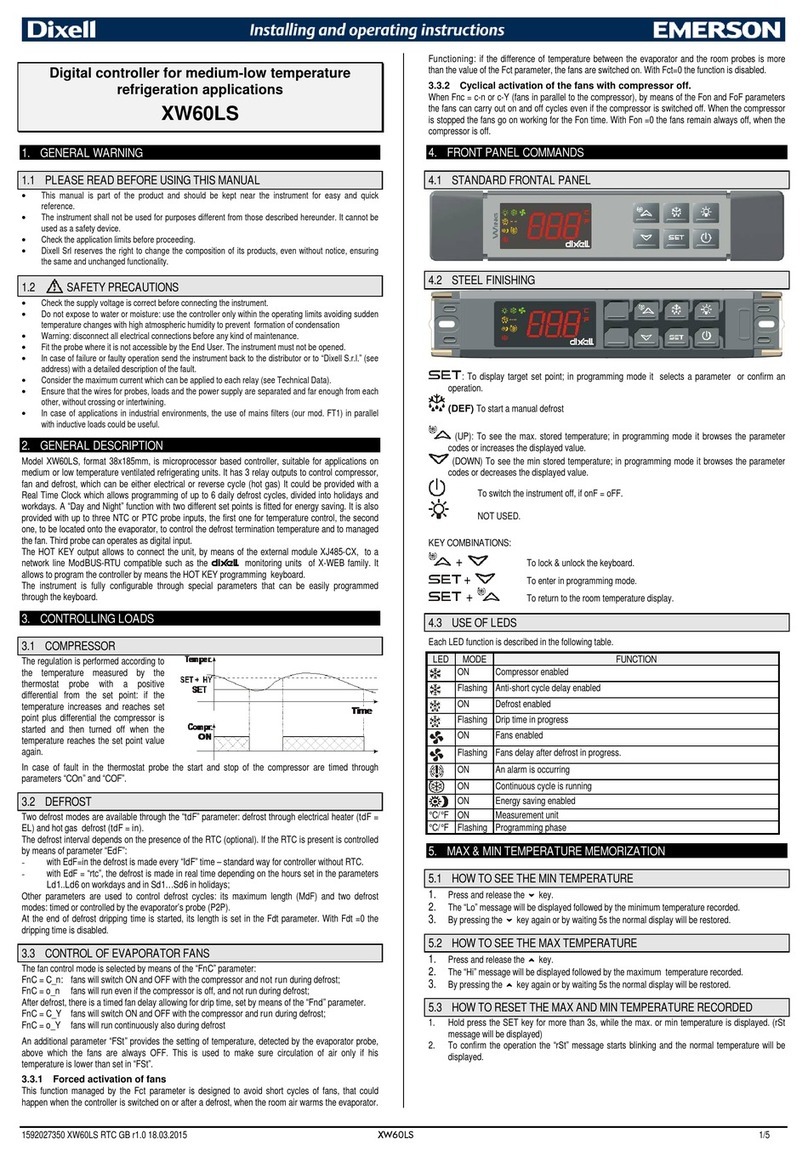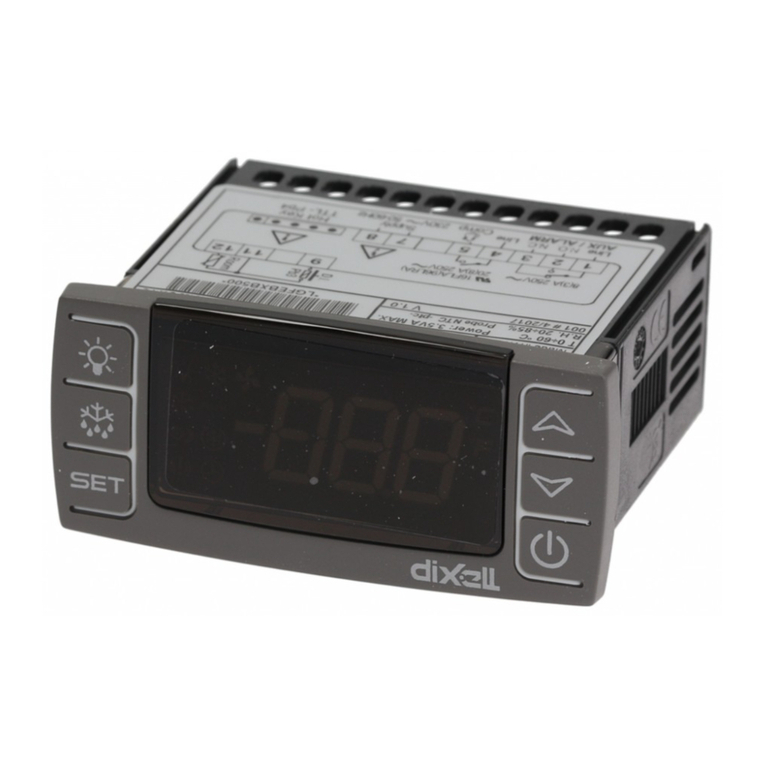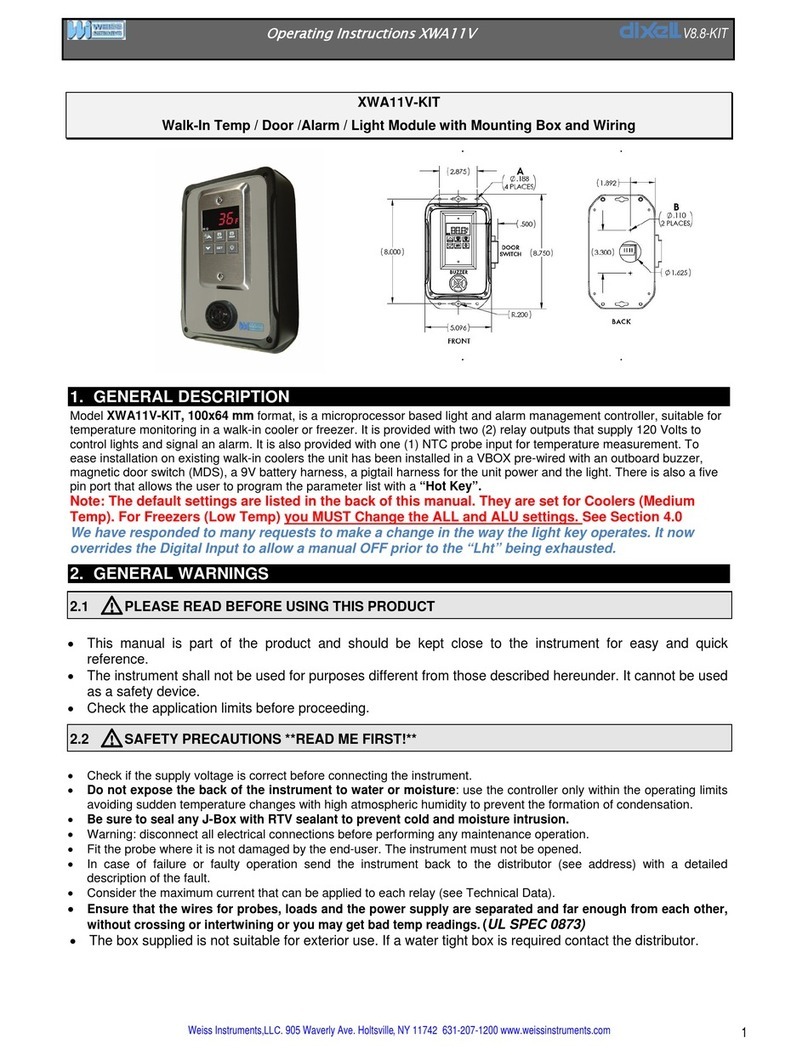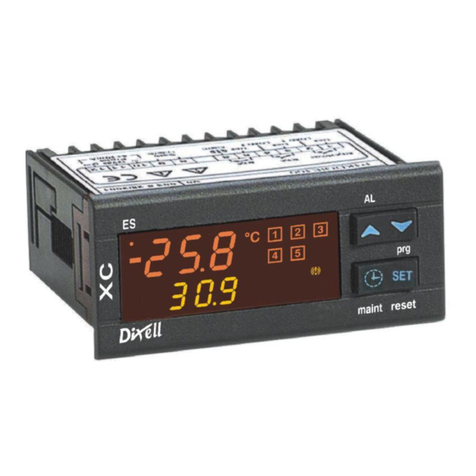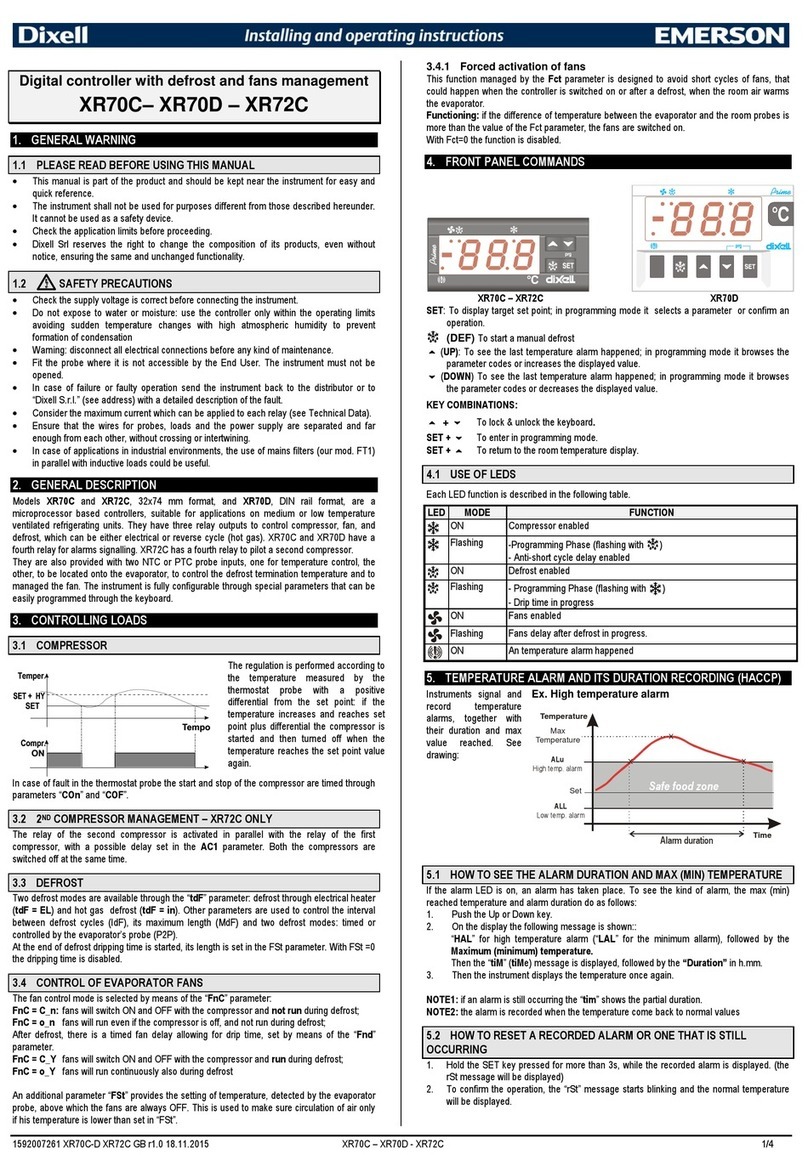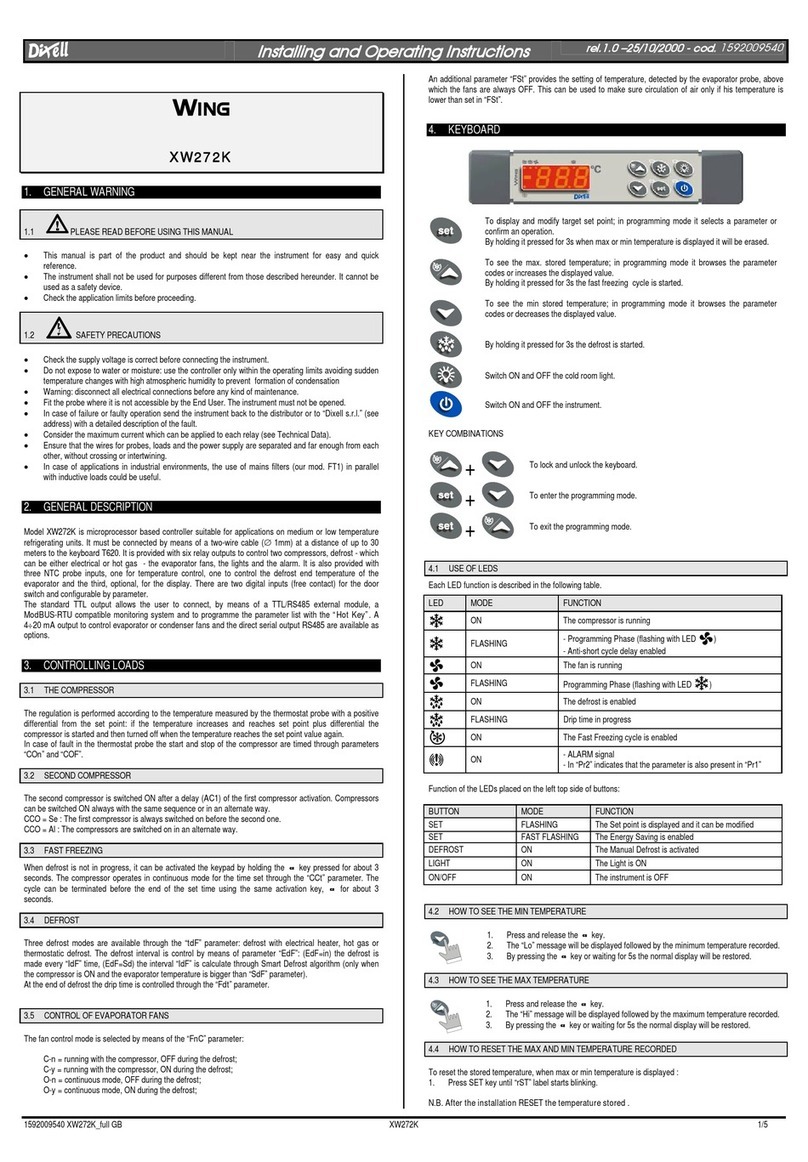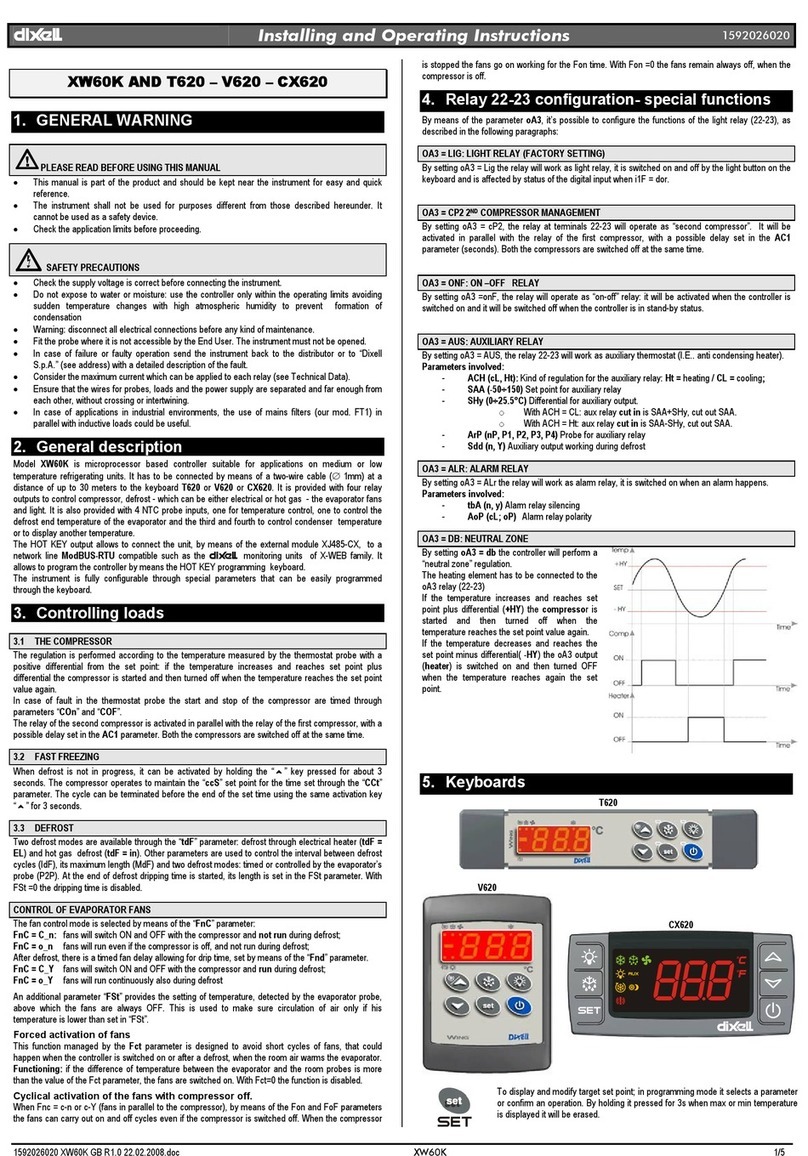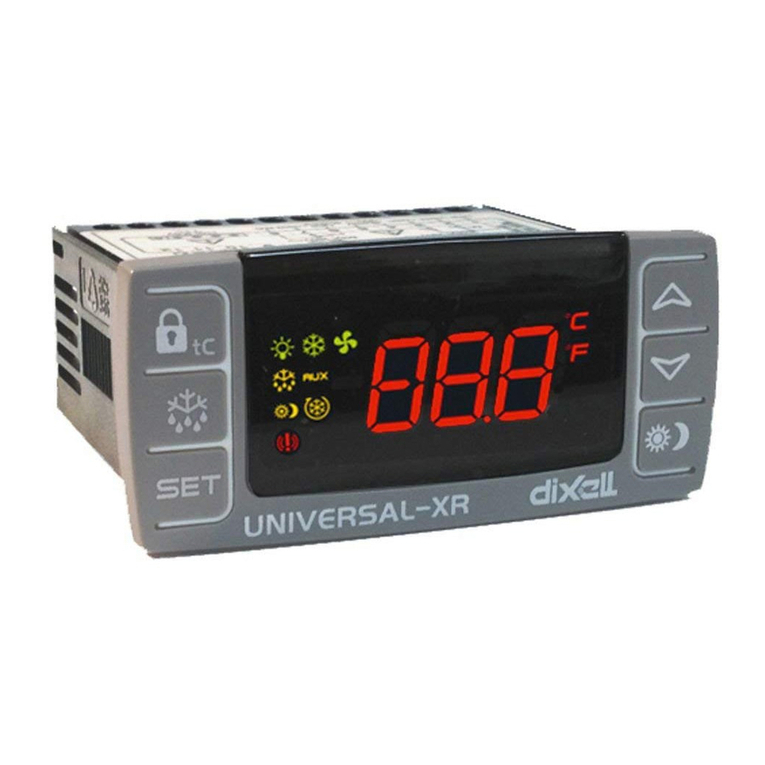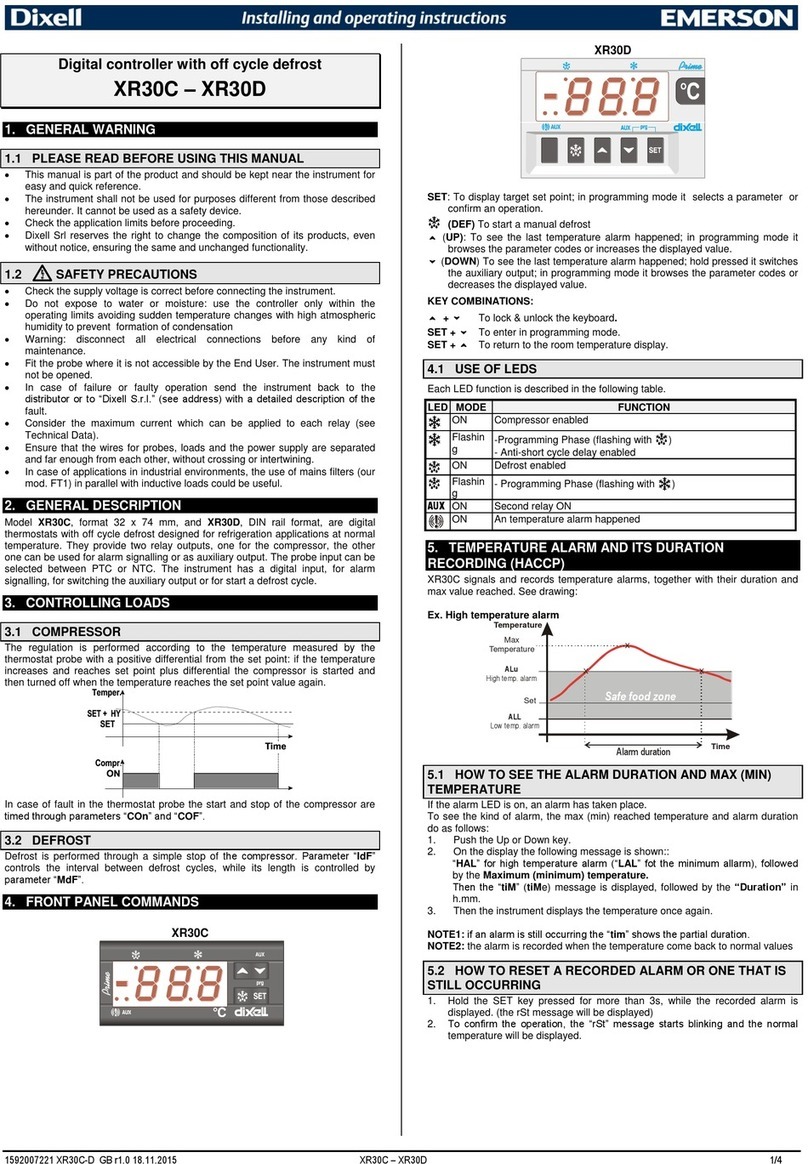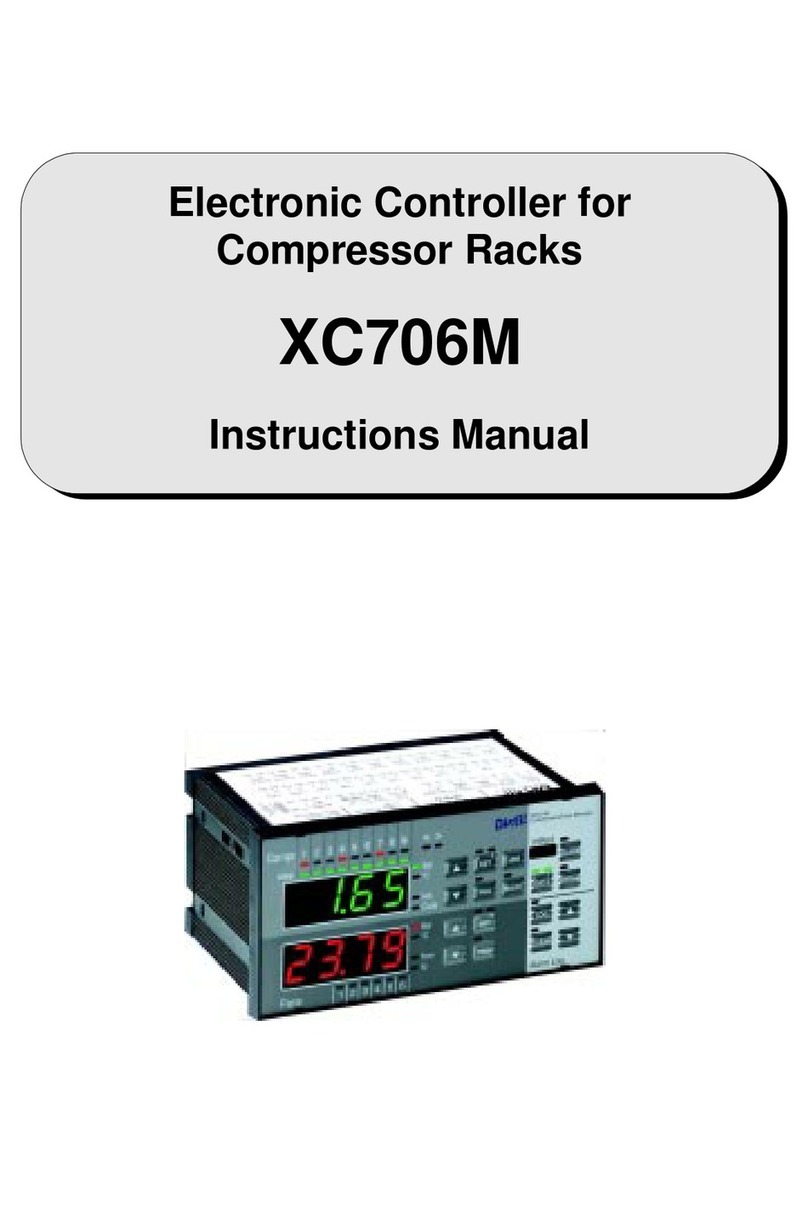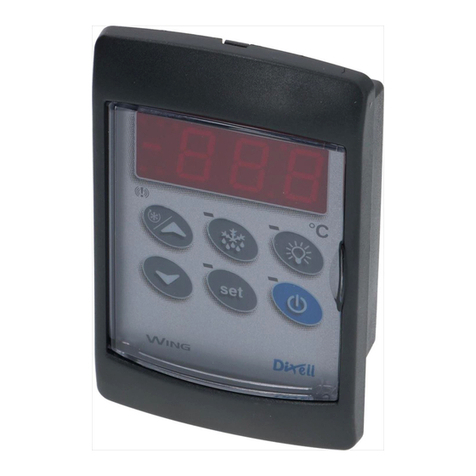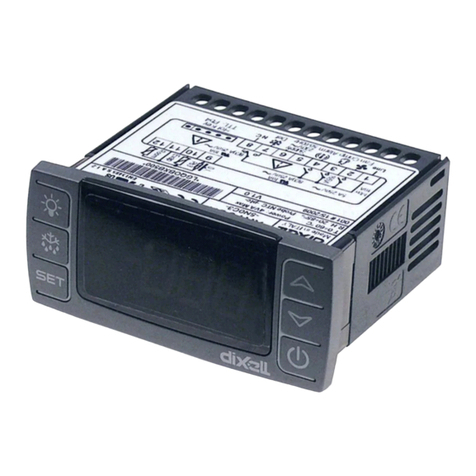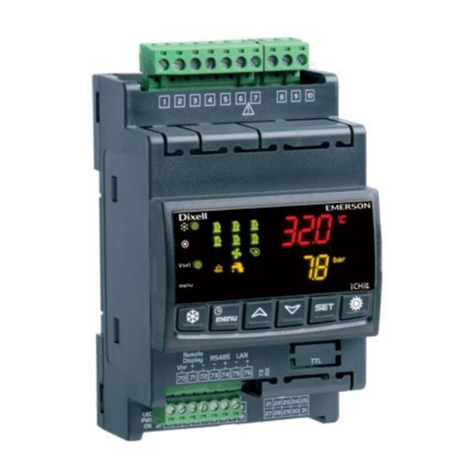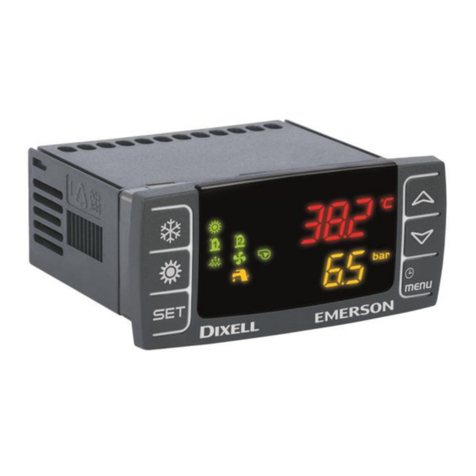1592008200 XR110C GB XR110C with built in RS485 3/4
no = normal;
Fan = Fan OFF;
CPr = Compressor OFF;
F_C = Compressor and fan OFF.
I2P Configurable digital input polarity:
CL : the digital input is activated by closing the contact;
OP : the digital input is activated by opening the contact
I2F Digital input operating mode: configure the digital input function:
EAL = generic alarm;
bAL = serious alarm mode;
PAL = Pressure switch;
dFr = Start defrost;
AUS = Relay AUX actuation;
Es = Energy Saving;
onF = remote On/OFF.
dor = door switch
did Time interval/delay for digital input alarm:(0÷255 min.) Time interval to calculate
the number of the pressure switch activation when I2F=PAL. If I2F=EAL or bAL
(external alarms), “did” parameter defines the time delay between the detection and
the successive signalling of the alarm.
OTHER
Adr RS485 serial address (1÷247): Identifies the instrument address when connected to
a ModBUS compatible monitoring system.
PbC Probe type selection: (NTC or PTC) selectthe type of probe used
OnF Stanb-by function:
0= Stand-by function not enabled.
1= Stand-by function enabled (under SET key control).
Rel Release software: (read only) Software version of the microprocessor.
Ptb Parameter table: (read only) it shows the original code of the dIXEL parameter map.
Prd Probes display: (read only) display the temperature values of the evaporator probe
Pb2 and the auxiliary probe Pb3.
Pr2 Access to the protected parameter list (read only).
6. DIGITAL INPUTS
The XR110C can support up to 2 free contact digital inputs. One is always configured as
door switch, the second is programmable in seven different configurations by the “I2F”
parameter.
6.1 CONFIGURABLE INPUT - GENERIC ALARM (EAL)
As soon as the digital input is activated the unit will wait for “did” time delay before
signalling the “EAL” alarm message. The outputs status don’t change. The alarm stops
just after the digital input is de-activated.
6.2 CONFIGURABLE INPUT - SERIOUS ALARM MODE (BAL)
When the digital input is activated, the unit will wait for “did” delay before signalling the
“BAL” alarm message. The relay outputs are switched OFF. The alarm will stop as soon
as the digital input is de-activated.
6.3 CONFIGURABLE INPUT - PRESSURE SWITCH (PAL)
If during the interval time set by “did” parameter, the pressure switch has reached the
number of activation of the “nPS” parameter, the “PAL” pressure alarm message will be
displayed. The compressor and the regulation are stopped. When the digital input is ON
the compressor is always OFF.
6.4 CONFIGURABLE INPUT - START DEFROST (DFR)
It executes a defrost if there are the right conditions. After the defrost is finished, the
normal regulation will restart only if the digital input is disabled otherwise the instrument will
wait until the “Mdf” safety time is expired.
6.5 CONFIGURABLE INPUT - ENERGY SAVING (ES)
The Energy Saving function allows to change the set point value as the result of the SET+
HES (parameter) sum. This function is enabled until the digital inputis activated.
6.6 CONFIGURABLE INPUT - REMOTE ON/OFF (ONF)
This function allows to switch ON and OFF the instrument.
6.7 CONFIGURABLE INPUT - DOOR SWITCH (DOR)
It signals the door status and the corresponding relay output status through the “odc”
parameter:
no = normal (any change);
Fan = Fan OFF;
CPr = Compressor OFF;
F_C = Compressor and fan OFF.
Since the door is opened, after the delay time set through parameter “dOA”, the alarm
output is enabled and the display shows the message “dA”. The alarm stops as soon as
the external digital input is disabled again. During this time and then for the delay “dot”
after closing the door, the high and low temperature alarms are disabled.
6.8 DIGITAL INPUTS POLARITY
The digital inputs polarity depends on “I1P” and “I2P” parameters.
CL : the digital input is activated by closing the contact.
OP : the digital input is activated by opening the contact
7. INSTALLATION AND MOUNTING
Instruments XR110C shall be mounted on panel, in a 29x71 mm hole, and fixed using the
special bracket supplied. The temperature range allowed for correct operation is 0 - 60 °C.
Avoid places subject to strong vibrations, corrosive gases, excessive dirt or humidity. The
same recommendations apply to probes. Let air circulate by the cooling holes.
8. ELECTRICAL CONNECTIONS
The instruments are provided with screw terminal block to connect cables with a cross
section up to 2,5 mm2. Before connecting cables make sure the power supply complies
with the instrument’s requirements. Separate the probe cables from the power supply
cables, from the outputs and the power connections. Do not exceed the maximum current
allowed on each relay, in case of heavier loads use a suitable external relay.
8.1 PROBE CONNECTION
The probe shall be mounted with the bulb upwards to prevent damages due to casual
liquid infiltration. It is recommended to place the thermostat probe away from air streams to
correctly measure the average room temperature.
9. RS485 SERIAL COMMUNICATION
The RS485 serial communication port allows to connect the unit, by means of a simple 2
wires shielded cable, to a network line ModBUS-RTU compatible as the dIXEL monitoring
system XJ500 (Version 3.2).
10. USE OF THE PROGRAMMING “HOT KEY “
The unit can UPLOAD or DOWNLOAD the parameter list from its own E2 internal memory
to the “Hot Key” and vice-versa.
10.1 DOWNLOAD (FROM THE “HOT KEY” TO THE INSTRUMENT)
1. Turn OFF the instrument by means of the ON/OFF key, remove the TTL serial cable
if present, insert the “Hot Key” and then turn the Controller ON.
2. Automatically the parameter list of the “Hot Key” is downloaded into the Controller
memory, the “DoL” message is blinking. After 10 seconds the instrument will restart
working with the new parameters.
3. Turn OFF the instrument remove the “Hot Key”, plug in the TTL serial cable, then
turn it ON again.
At the end of the data transfer phase the instrument displays the following messages:
“end “ for right programming. The instrument starts regularly with the new programming.
“err” for failed programming. In this case turn the unit off and then on if you want to restart
the download again or remove the “Hot key” to abort the operation.
10.2 UPLOAD (FROM THE INSTRUMENT TO THE “HOT KEY”)
1. Turn OFF the instrument by means of the ON/OFF key and remove the TTL serial
cable if present; then turn it ON again.
2. When the unit is ON, insert the “Hot key” and push okey; the "uPL" message
appears.
3. Push “SET” key to start the UPLOAD; the “uPL” message is blinking.
4. Turn OFF the instrument remove the “Hot Key”, plug in the TTL serial cable, then
turn it ON again.
At the end of the data transfer phase the instrument displays the following messages:
“end “ for right programming.
“err” for failed programming. In this case push “SET” key if you want to restart the
programming again or remove the not programmed “Hot key”.
11. ALARM SIGNALS
Message
